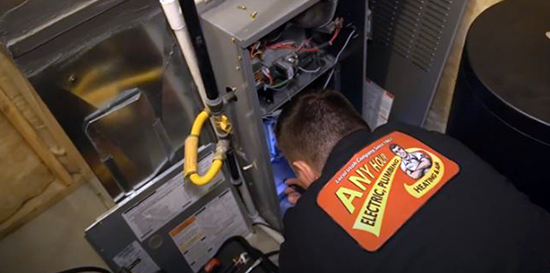What Typically fails On A Furnace?
Furnaces are a crucial part of any home’s heating system and require regular maintenance to ensure they continue functioning correctly. Unfortunately, furnaces can fail due to a variety of issues, ranging from simple repairs to complete replacements. It’s important to identify these problems early on in order to prevent further damage. In this article, we will cover the most common failures associated with furnaces and how homeowners can identify them.
Heat Exchanger Failure
Heat Exchanger Failure is a common furnace issue that can pose a significant risk to your home and your family’s safety. Heat exchangers are the component of the furnace responsible for transferring heat from one area to another. When this part malfunctions, it can cause toxic gases such as carbon monoxide to leak into your living space, creating potential health hazards for those in the home. In order to prevent any potential issues, it is important to identify common indicators that can signal a heat exchanger failure.
Some of these indicators include the presence of physical cracks or rust on the exterior casing of the heat exchanger, loud noises while in operation, or reduced airflow out of vents and registers—all signs that should prompt an inspection from a professional HVAC technician. So here are furnace repair coon rapids to give you an idea about furnace repair.
Blower Motor Malfunction
A blower motor malfunction is a common issue when it comes to furnaces. The blower motor is responsible for circulating air throughout the house via the ductwork, while also providing the necessary power to keep the furnace operational. Without this part functioning properly, your furnace won’t be able to do its job of keeping your home warm and comfortable. It’s important to know what causes blower motor malfunctions and how they can be avoided or repaired.
Furnace problems can have various origins, but usually, a blower motor malfunction is caused by worn-out parts, lack of maintenance, or improper installation. Dirt buildup on moving parts can cause them to grind together, which leads to wearing down and eventually failing altogether. Not scheduling regular maintenance can lead to serious issues like air leaks in your system that make a replacement necessary sooner than expected.
Thermostat Problems
Thermostat Problems can be a major source of frustration when it comes to home heating systems, especially in the cold winter months. The thermostat is responsible for controlling the temperature in your home, and any malfunctions can cause serious discomfort. Fortunately, understanding what typically fails on a furnace can help you troubleshoot the issue before calling an HVAC technician. Common problems include inaccurate readings from your thermostat due to low batteries or improper wiring. If you’ve checked these areas and are still having problems regulating temperature, it’s likely that there could be a malfunction with the blower motor or limit switch. Another possible issue is that dirt or dust has accumulated around the parts inside of your furnace over time, causing them to work less efficiently. Additionally, if you hear strange noises coming from your furnace, this may indicate potential damage to internal components such as bearings or belts.
Airflow Restrictions
Airflow restrictions are often the culprit when a furnace fails. If air isn’t able to move freely through your furnace, it can cause a variety of problems, some of which can be rather serious. To ensure your furnace is working correctly and efficiently, it’s important to know what can cause airflow restrictions and how they should be handled.
Airflow restrictions occur when there’s an obstruction in the air ducts leading to and from the furnace, such as dust bunnies or pet hair. The fan motor may also become clogged with dirt or debris over time, causing insufficient airflow and resulting in a drop in efficiency or system shutdown altogether. Additionally, if the filter on your furnace becomes too dirty or clogged, it won’t allow enough air to pass through for proper combustion. This could result in unsafe levels of carbon monoxide being released into your home environment. So get in touch to schedule a service and to ensure your family is safe.
Conclusion
Regular maintenance is an essential part of ensuring that your furnace runs properly and efficiently. Without regular maintenance, the chances of something failing on a furnace increase exponentially. In conclusion, it is recommended to have a qualified technician regularly inspect and perform any necessary maintenance on your furnace.
A routine inspection will identify any potential issues with the system before they become major problems. This can include cleaning or replacing air filters, checking for carbon monoxide leakage, lubricating moving parts, testing electrical connections, inspecting heat exchange tubes or burners for corrosion or damage, and making sure that all safety controls are functioning properly. Taking these steps will ensure that you get maximum performance from your furnace for many years to come.
By performing regular maintenance on your furnace each year before the winter season begins, you can rest assured knowing that your home will remain warm and comfortable during those cold months ahead.

Post Comment